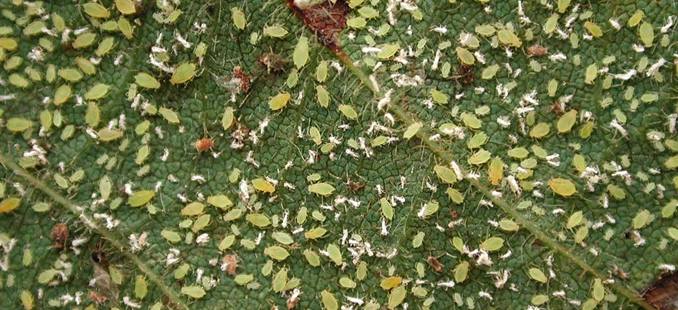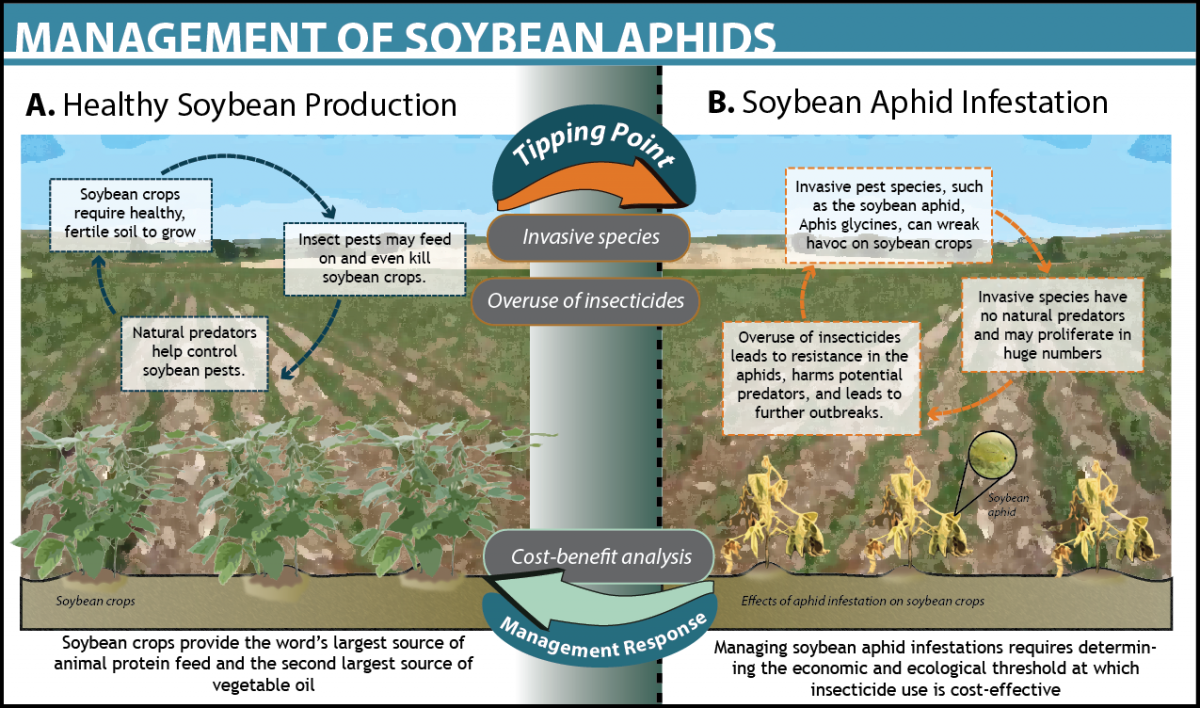Cost benefit analysis reveals the socio-ecological threshold for when insecticides should be used to control invasive soybean aphids
Tipping Points in Aphid Outbreaks
Soybean aphids have afflicted our national soybean crop for over a decade. This relative newcomer to our fields has impacted crop revenues,1 as well as the environment, and farmers have responded by applying insecticides. There are side effects of insecticides, including insecticide resistance, resurgence of the soybean aphid, and replacement of aphids with other types of pest.2 Thus research has focused on answering the question: when does it make sense to apply insecticide and when should we let natural aphid predators do the work for us?
Research in the U.S. Midwest has sought to determine the economic threshold at which insecticide application is most cost-effective. The answer: 250 aphids per soybean plant when over 80% of the sampled crop plants demonstrate infestation.1,3 This threshold is both economic— because the insecticide application becomes cost-effective4 —and ecological, because above this level, aphid infestations dramatically reduce soybean production.1
What We Can Learn
In the case of soybean aphid management in the U.S., farmers are basing insecticide application on the economic and ecological threshold of infestation, using routine monitoring of soybean plants to determine aphid infestation levels relative to that threshold, and applying insecticide on a geographic scale small enough to control the driver (aphids) and monitor ecological outcomes (crop yield).
Cost-Benefit Analyses, required for management actions under certain laws,5 can be used to identify economic thresholds and may aid managers in understanding associated ecological thresholds.6 Although the use of cost-benefit analysis to improve management outcomes in threshold-based systems was not found to be significant in our management review,7 when economic valuation of ecosystems are linked to the state of natural resources, a significant change in market values can indicate proximity to an environmental tipping point.6
Over three billion bushels of soybeans were grown in the U.S. Midwest in 2011, which provides ample motivation to investigate the thresholds that may affect profit.8 Most ecosystem shifts are not directly correlated to a loss in economic value, but where they are, there is a powerful incentive to invest in research around potential tipping points. Such market-based tipping points may be helpful case studies for evaluating effective, scalable adaptive management strategies in broader socio-ecological systems.
As the Ocean Tipping Points team has come to understand, the most successful scenarios for resource management occur when management is threshold-based, populations are monitored routinely, and the geographic scale for management is relatively small.
Learn more about our Management Review research and Ocean Tipping Points project.






